
The Federal Reserve Bank of San Francisco (FRBSF) yesterday released an interesting report (below) arguing that the US sharemarket will face considerable headwinds over coming decades as the retiring baby boomer generation shifts from buying stocks to selling equities to fund their retirement (h/t Bernard Hickey).
According to the report, a key reason why the US share market boomed over the 1980s and 1990s was because the baby boomers – born from 1946 to 1964 – had entered their prime working years and were saving for their retirements through stocks.
However, now that the baby boomers are entering retirement, they are divesting their risk assets, including shares, just as classic life cycle theory would suggest they do.
The FRBSF researchers have produced a chart showing the historical price-to-earnings (PE) ratio against the M/O ratio, which represents the ratio of middle-aged people (aged 40 to 49) against the old-age cohort (aged 60 to 69):
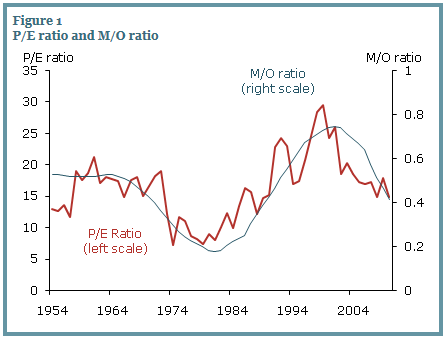
As you can see, the two data series are highly correlated, with the M/O ratio explaining around 60% of the movements in the PE Ratio during the sample period.
The researchers have then forecast the future trajectory of the PE ratio by calculating the projected M/O ratio using Census Bureau projected population data:
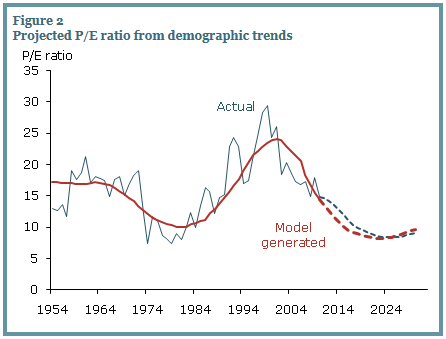
According to their forecast, the US PE ratio is expected to decline from around 15 times currently to around 8.5 in 2025 before recovering slightly in 2030. Moreover, real stock prices are expected to trend downwards until 2021, losing around 13% of their value relative to 2010. The subsequent recovery is also expected to be quite slow, with real stock prices not expected to return to their 2010 level until 2027.
Implications for Australia:
I have written a great deal previously on the potential impact on asset prices arising from the baby boomer’s retirement, so I won’t go into great detail here. Instead, I will make only a few points.
First, according to the latest ABS Household Wealth and Wealth Distribution survey, the baby boomers (45 to 64 years old) held 54% of Australia’s financial assets, with those aged 65+ a further 22%, taking the older cohorts’ share of Australia’s financial assets to 76% (see below chart).
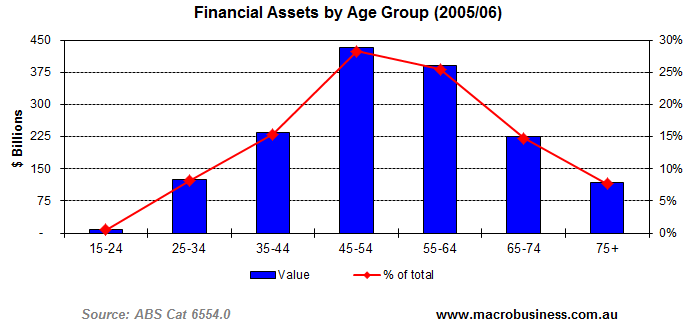
Second, Australia’s projected dependency ratio – defined as the ratio of the non-working population, both children and the elderly, to the working age population – is similar to the United States:
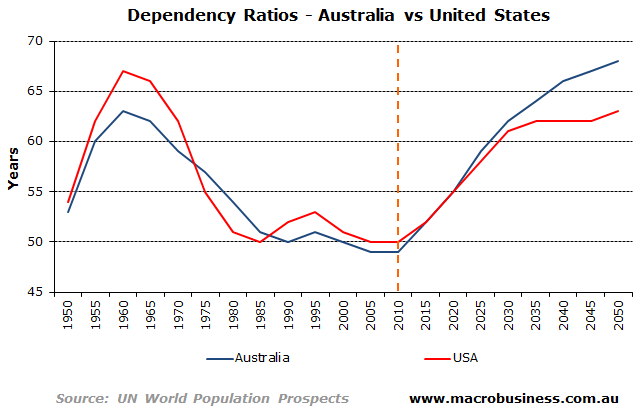
Finally, Australia appears to have experienced a similar uplift in PE ratios, albeit ours occurred in the 1990s (versus mid-1980s in the United States) and was not as pronounced (see below chart). Further, it is difficult to determine whether this uplift in PE ratios has occurred due to other factors, such as falling nominal interest rates and compulsory superannuation.
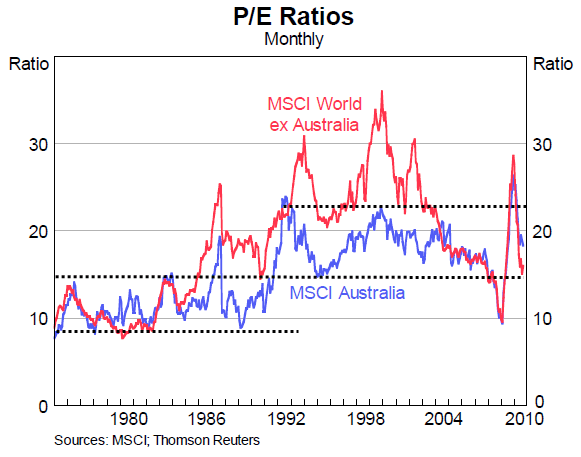
Nevertheless, the FRBSF’s analysis is interesting and confirms earlier research on this blog that the retirement of the baby boomers – a cohort representing a quarter of the population but holding around half of Australia’s housing and financial assets – will adversely affect asset values.
Over coming weeks, I will attempt to replicate the FRBSF’s modelling using Australian data in order to: (1) ascertain whether the same relationship between Australia’s demographic structure and PE ratios holds; and (2) predict the future long-term trajectory of the sharemarket.

